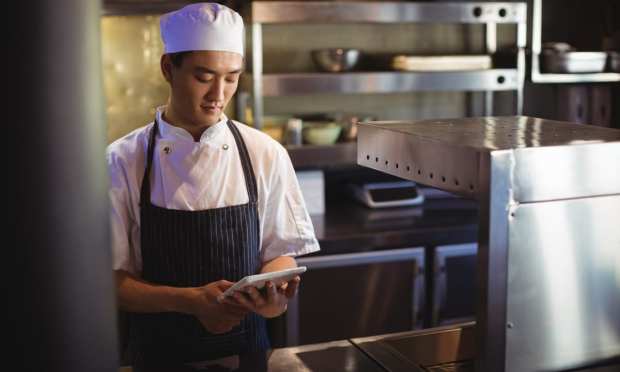The Connected Future Of Kitchen Technology

As kitchen technology rapidly evolves, with automated solutions entering the mainstream, remaining at the forefront of restaurant innovation will require more than just individual automated devices. As the COVID-19 pandemic has accelerated digital adoption for businesses and consumers alike, the next level requires business owners to look beyond the capabilities of any one instrument and toward how technologies can be integrated into a network in which each proverbial hand always knows what the other is doing.
This is where connected kitchens — kitchens in which devices work together to optimize the workflow — come into play. For example, operations software company Jolt, in a guide created in partnership with QSR Web, describes how connected kitchens can be used to provide “enhanced visibility into the business and improved team efficiency,” suggesting monitoring “avoidance of product loss, automation of manual processes, and improvements to food safety.”
According to Dipesh Hinduja, senior IT manager and technical architect at Stratix, writing for QSR Magazine, one iteration of the connected kitchen will be the “mobile-only kitchen,” in which consumers will order through a restaurant’s app, and then location-sensing technology built into the same app will inform workers upon the consumer’s arrival at a drive-thru lane or order pickup spot.
Another consumer-facing point of potential connection is the menu. Real-time menu updates can reflect availability as items sell out and as new specials arrive. Internet-enabled menus also provide a valuable opportunity for restaurants hoping to target food source-conscious consumers. As Cambridge Food Science’s Dr. Roberta Re told E&T in an interview, “Smart menus could be connected in real time with the blockchain of food to provide the actual history of specific produce.”
Meanwhile, for quick-service restaurant (QSR) chains looking to keep up the fast-moving industry, adopting connected technologies could be the difference between staying at the front of the pack and falling behind. Though connected kitchens are still in their early days, their adoption is accelerating. As kitchen technology company Welbilt CEO William C. Johnson said on a recent call with analysts, “We have somewhere around 8,000 units connected across thousands of kitchens right now, and I can tell you, that’s up double what it was a year ago. And we see this accelerating and improving almost exponentially, as people start to get more equipment connected.”
He added that the benefits of connected devices, including “their ability to monitor energy, to monitor usage, to monitor maintenance,” are driving demand. Additionally, Johnson pointed out, as more QSR giants adopt these technologies, “they start making it affordable for everybody else, for the smaller players, as it becomes more prominent.”
In January of 2020, PYMNTS data predicted that there will be approximately 25 billion Intelligence of Things (IoT)-enabled devices in use by the end of 2021. With the acceleration of automation caused by the COVID-19 pandemic, this number is sure to be even higher. In fact, it will not take long for even entire cities to be connected by smart technology, with the global smart cities market projected to grow to nearly $3.5 trillion by 2026, driven by investment in everything from connected street lighting systems to smart electrical grids.
